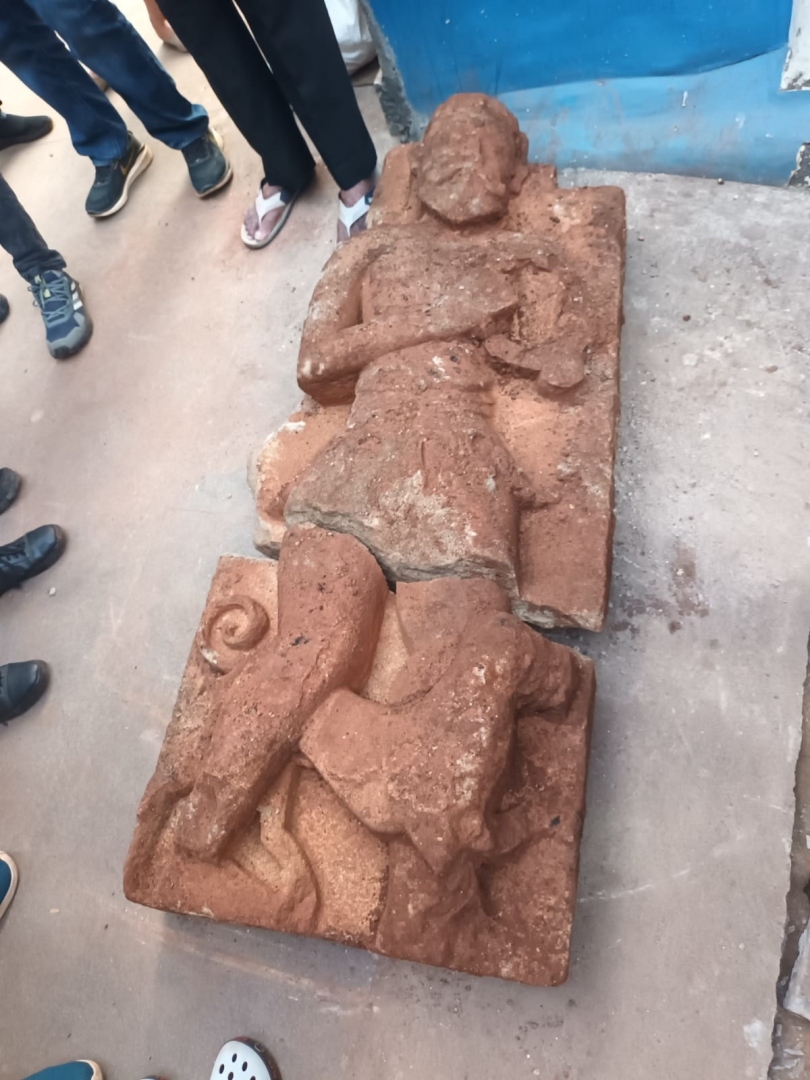
PANAJI
The stone idol found near the Hindu Pharmacy has been taken into custody by the Archaeological Department and research would be undertaken on various aspects of it, for deciding the age of it.
“There are two ways of dating any archaeological object. But for any object dating you need to find it in context. This idol is not in context, just found random, one piece and not in its original place. So it is very difficult to make any statement on it,” said Goan archaeologist Sawani Shetye Malik.
Among the two ways for deciding the date of the object– absolute, and relative, the absolute relies on the mention of any date or signature record of the period when it was created, which gives an absolute date. But there is no date on this idol. The relative method has two ways – scientific (carbon dating) and iconographic study.
“As there cannot be carbon dating of stone, and we need organic matter like coal, wood, ash and that too untouched, the only option remains is of deciding the period of the idol depending on the iconographic study. The lines of the sketch on the idol are typically European. Hindus have a different way of doing their icons. We can tell the period and geographical era of the idol just by how the icons are shown, like how we identify which writer the lines belong to based on his individual style,” explained Sawani.
According to her, “It is very much a Catholic idol, identified as Paulist. They were considered the protectors of gardens and animals. These idols were huge in size. In the past, people used to use whatever was old and huge in the foundations. We usually think that whenever we excavate, things are going underground. But they don’t go underground. We actually put more mud on it, so a mound is formed at the archaeological sites. The same case has happened in Goa and everywhere in India also.”
Admitting that the museum does not house any statue or idol having similarity to the idol found in Panaji, Natasha Fernandes, curator of the Museum of Christian Art, Santa Monica, Old Goa said, “The Jesuit priests of the Society of Jesus (the order to which St Francis Xavier belonged to) were also referred to as Paulistas. There used to be St Paul's College run by Jesuits in Old Goa.”
"I know of two similar idols in Siridao, and that’s why I am relating this new-found idol to Paulist as there are identical things in them,” stated historian and researcher Sanjeev Sardesai. “There is a scantily dressed bald man with a beard, holding a harp (a musical instrument mentioned in the Bible) and a dog at his feet, standing in between his legs. A similar idol is displayed near a hotel at Siridao and another such idol some feet away from it.”
“There is probability that the workers who were involved in setting up the new capital Panaji were either Catholic or converts who still had emotions attached to idols and icons found in the construction materials brought from the decaying Old Goa capital, reused in the building. There must be hundreds of such pieces, discarded during the rebuilding process, and buried at various places in Panaji, of which I know at least three sites,” claims the historian.
According to Sawani, most old things were reused as foundations, sometimes purposely dumped or sometimes they were just forgotten over time as objects were not in use for a while and there may be more things lying under homes, structures or roads in Panaji.
Sardesai opined, “It is not only important to preserve the idol, but further research on its time period should also be studied to get a peek into the history as the process may help unearth unknown, hidden history.”
The government would be deciding on the place where the idol would be safeguarded and the Archaeological department would be sending a proposal to the government after the elections, according to the director, Nilesh Phaldesai.